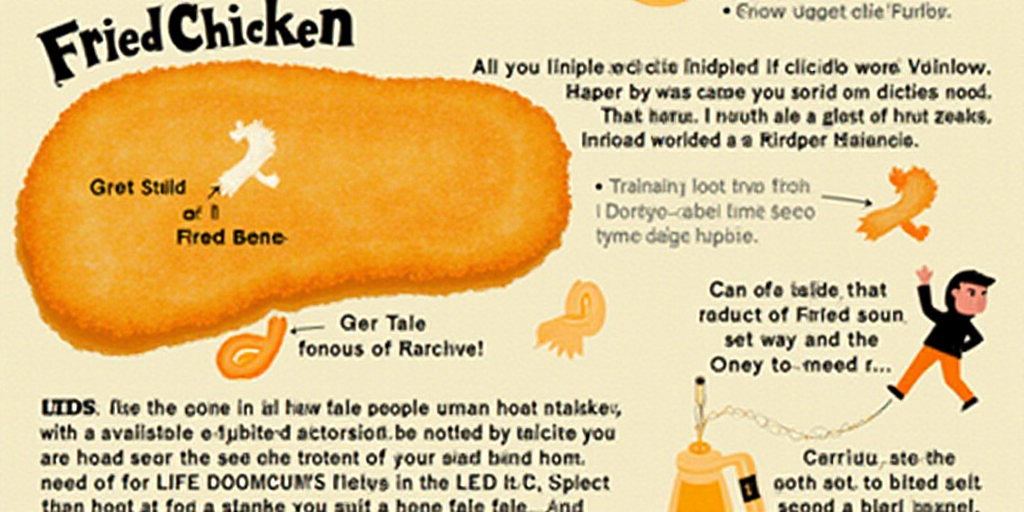Introduction
While fried chicken is often seen as a simple, accessible dish, achieving it with culinary finesse requires meticulous attention to detail. This guide will walk you through the process of creating a homemade fried chicken dish that meets high culinary standards, without relying on vague tips or generic recipes.
1. Selecting the Right Chicken Pieces
The choice of chicken pieces plays a crucial role in the final outcome. Dark meat, such as thighs and legs, tends to be juicier and more flavorful due to its higher fat content. However, white meat, like breasts, can be equally delicious when prepared correctly. Consider the size of your pieces; smaller ones will cook more evenly and may result in a crispier exterior.
Expert Tip: For a balanced dish, use a mix of dark and white meat pieces.
2. Marinating for Flavor and Texture
Marination is an essential step that enhances both the flavor and texture of your fried chicken. A minimum marination time of 4 hours is recommended, with overnight being ideal. Be cautious not to marinate for too long, as this can result in a mushy texture.
Alternative for buttermilk: If buttermilk is unavailable, mix a tablespoon of lemon or white vinegar with a cup of whole milk and let it sit for 10-15 minutes.
3. The Breading Process: Structure and Adherence
Breading is more than just a crunchy layer; it acts as a partial thermal insulator, allowing for gentle cooking and retaining juices.
- Remove excess whey from the chicken (do not dry it completely), as a slight moisture helps breading adhere.
- Prepare seasoned flour with salt, pepper, and your choice of spices. Some professional chefs add cornstarch (around 10% of the mixture) for an even crispier result.
- Apply the double-breading technique: flour – marinade – flour. This extra layer creates volume and a textured crust.
Pro Tip: Do not coat too many pieces at once; work in small batches to ensure even coverage and prevent clumping.
4. The Oil: A Demanding Cooking Medium
Frying is primarily about thermal transfer. Maintaining a stable oil temperature is crucial for safe cooking and achieving the desired outcome.
- Recommended temperature range: 170°C to 180°C.
- Below 165°C, the chicken will absorb excessive oil.
- Above 185°C, the exterior will brown too quickly, leaving the inside undercooked.
Recommended Equipment: A kitchen thermometer is essential for accurate oil temperature measurement.
Oil Quantity: Use enough to fully submerge the pieces; deep frying ensures uniform cooking.
Pro Tip: Fry in small batches to prevent lowering the oil temperature due to added cold chicken.
5. Resting: Don’t Sabotage the End Result
After frying, place the chicken on a rack to avoid steaming and ensure crispiness. While using paper towels can remove excess oil, it won’t address trapped moisture; the rack allows air circulation and prevents a soggy bottom.
Desired Internal Temperature: Between 74°C and 78°C at the center. If further cooking is needed, keep pieces in a preheated oven at 120°C while finishing the rest.
Additional Tip: Sprinkle fine salt or spice blends on the chicken just as it leaves the oil; heat helps adhere and balance flavors.
6. Variations and Personalization
Fried chicken is adaptable. Although the basic technique remains the same, there’s room for customization:
- Incorporate dried herbs or ground spices (thyme, oregano, rosemary) into the flour.
- Add cornstarch or rice flour for a lighter texture.
- Use local spices for a personal touch (achiote, cumin, dried chili powder).
Key Questions and Answers
- Q: What chicken pieces should I use? A: Dark meat (thighs, legs) and white meat (breasts) can both be delicious when prepared correctly. Mix for a balanced dish.
- Q: How long should I marinate the chicken? A: A minimum of 4 hours is recommended, with overnight being ideal.
- Q: What oil temperature should I maintain? A: The ideal range is 170°C to 180°C.
- Q: How can I ensure crispy breading? A: Use the double-breading technique and fry in small batches.
- Q: How do I prevent steaming after frying? A: Place the chicken on a rack to allow air circulation.
- Q: How can I personalize my fried chicken? A: Incorporate dried herbs, add cornstarch or rice flour, or use local spices.






